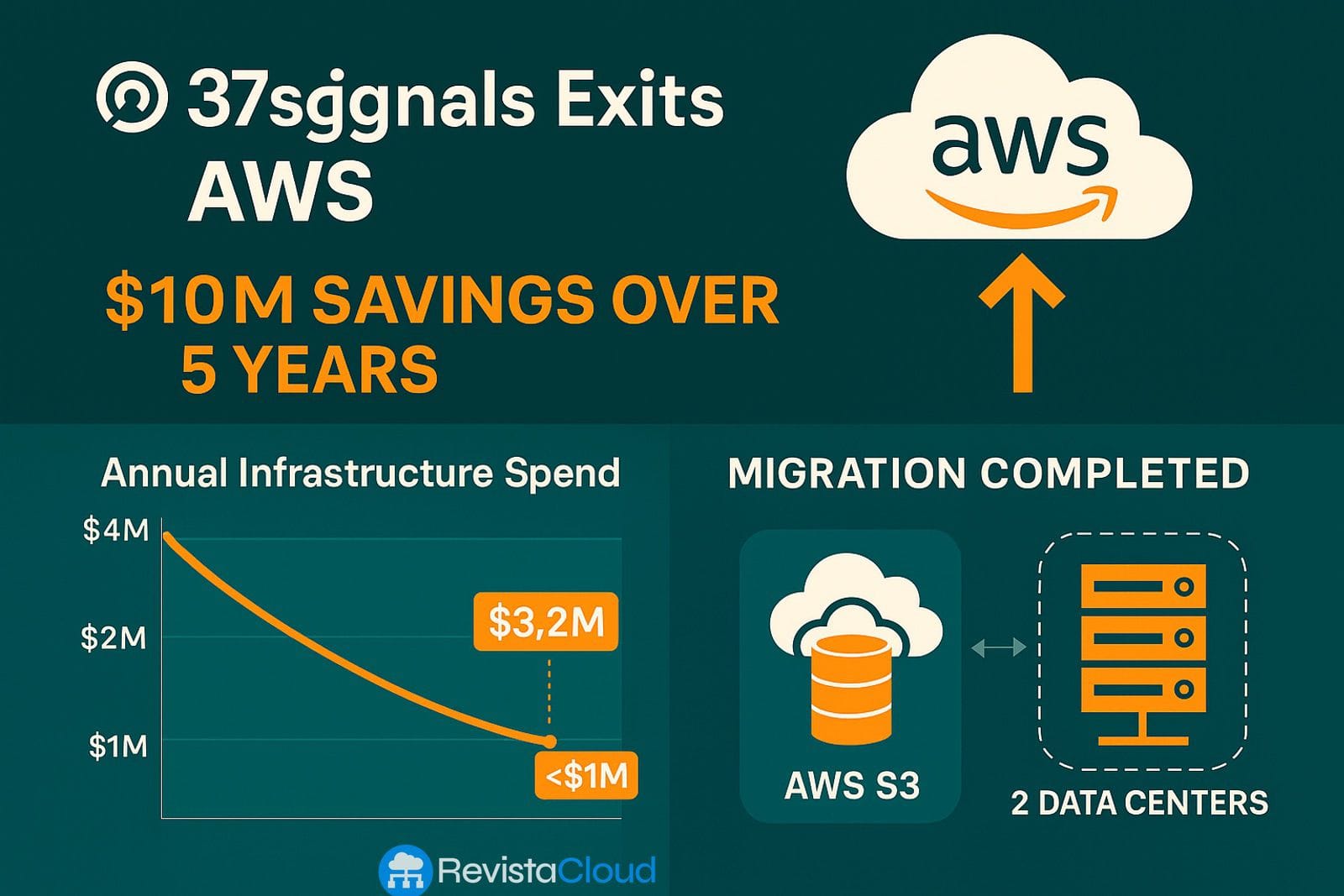The company led by David Heinemeier Hansson (DHH) has completed its cloud repatriation by transferring 18 PB of data to its own infrastructure. AWS is covering the exit costs, amounting to $250,000.
The software company 37signals—creator of Basecamp and HEY—has officially begun its migration away from Amazon Web Services (AWS), completing one of the most closely watched cloud repatriations in the tech industry in recent years. According to the company’s CTO, David Heinemeier Hansson, who revealed this through LinkedIn, the company is transferring all its data hosted on Amazon S3 to its new infrastructure based on Pure Storage, deployed in its own data centers.
Ending More Than a Decade on S3: Goodbye to a $1.5 Million Annual Bill
After more than ten years using Amazon S3 to store data for its flagship products, 37signals is planning to completely eliminate its AWS accounts this summer. This will happen after migrating over 18 petabytes of data to a new high-performance flash system. According to DHH, the current cost of storage on S3 is around $1.5 million per year, while the company’s own infrastructure will cost less than $200,000 annually after amortizing the hardware.
Additionally, the company confirmed that AWS has covered the total exit cost (DTO), estimated at around $250,000, due to a public commitment made in March 2024 after the implementation of the EU Data Act, which requires cloud providers to eliminate technical and commercial barriers to migration.
Back to the Data Center: Two Own Centers, One Team
The new strategy for 37signals involves operating two of its own data centers, equipped with Pure Storage solutions and Dell hardware, where they will host all their products and workloads. Part of the migration has already been amortized: the $700,000 invested in infrastructure during 2023 was offset by the gradual reduction of cloud commitments.
In total, the company is expected to save over $10 million in five years, cutting its annual infrastructure bill from the initial $3.2 million to less than $1 million. All this without expanding its technical team.
Why Move Away from the Cloud?
Although 37signals’ approach has been controversial, DHH insists that the cloud model is not universally the best option. In his own words:
“The cloud can be beneficial in certain circumstances, but the industry convinced the world it was the only viable option. Today we demonstrate that operating your own hardware is not only possible but also profitable.”
This message aligns with an emerging trend in several companies—including Dropbox and Basecamp—that have decided to reduce their reliance on providers like AWS, Azure, or Google Cloud to regain control over costs and performance.
A Paradigmatic Case of Cloud Repatriation
This move comes at a time of increasing scrutiny over the hidden costs and complexity of cloud lock-in. Cases like that of 37signals are becoming tangible examples that operating outside the cloud can be feasible—and advantageous—for certain organizations, especially when the volume of data and predictability of workloads justify the initial effort.
However, experts point out that the savings calculations provided by 37signals do not include aspects such as hardware renewal, additional operational staff, energy costs, or redundancy. Nonetheless, the message resonates: the cloud is not the only path.
https://www.linkedin.com/posts/david-heinemeier-hansson-374b18221_after-over-a-decade-on-aws-s3-its-finally-activity-7325882069325152256-qt8S

